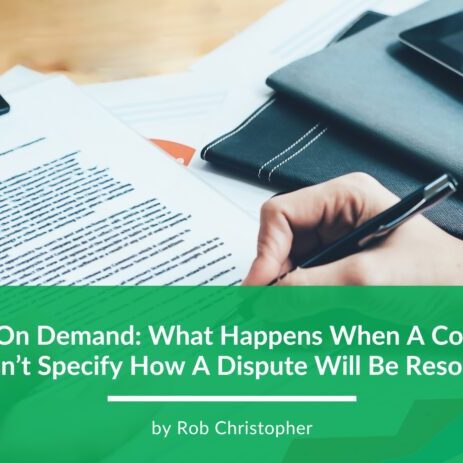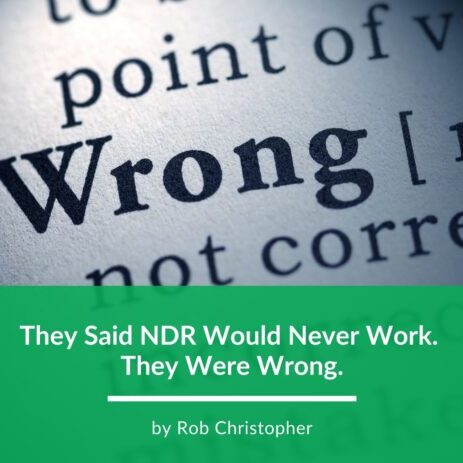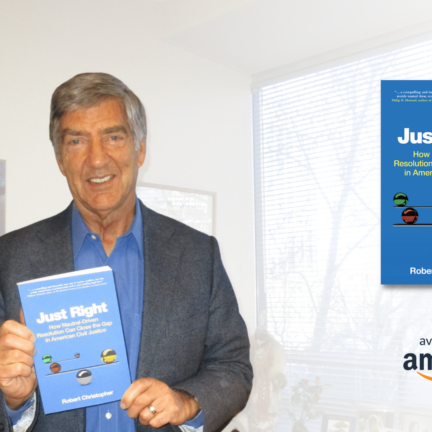Proportionality in Dispute Resolution: Breathing Through Your Legal Downward Dog

Some of us were not meant to be yogis. Downward Dog is more accurately Face-plant Dog for some people. Balance, right? Who knew it could be so difficult? Lately though, there’s been a great deal of chatter about finding balance. In fact, achieving balance appears to have surpassed many previously elevated goals such as making as much money as possible, maintaining triathlete level fitness standards, or even raising a first-chair-violin-and-home-run-hitting valedictorian. The renaissance of balance, of proportionality, means that we can look at our goals with a sense of perspective. How we get what we want becomes as important as getting what we want.
Proportionality in the law dates back as far as the existence of law. Hammurabi’s Code introduced the concept of an eye for an eye somewhere around 1754 BC. Fortunately, we’ve evolved from a literal sense of proportionality to a more figurative sense, letting the punishment fit the crime in other ways (death penalty cases aside). What we can take from this early example though is that proportionality has always been an essential element to the idea of justice. We want the scales of justice to be balanced or it doesn’t feel like justice.
The need for proportionality isn’t limited to eyes and criminal punishment. Whenever two sides seek resolution, there’s a win at stake. So there’s just as great a need for balance in so-called “civil” disputes with purely financial or property stakes – maybe even more need, since the consequences of losing usually don’t rise to maiming, imprisonment or death. For example, the 2015-revised Federal Rules of Civil Procedure now officially require proportionality in litigating civil cases. (FRCP 26(b).) The idea of crushing one’s adversaries with “fishing expedition” discovery so burdensome that they will beg mercy has lost traction to the idea that discovery proportional to the actual relief sought and “amount in controversy” is the guiding principle. Judge Paul W. Grimm of the US District Court in Maryland believes in the concept of proportionality so strongly that he has created a standing Discovery Order addressing the issue, which he enters into every case that appears before him. You will play nice in Judge Grimm’s sandbox.
Alternative dispute resolution (“ADR”) is a collection of alternatives to litigation whose raison d’etre is to strive for increased proportionality. If the stakes don’t warrant the many costs of a lawsuit, but defy a handshake, alternative dispute resolution is meant to fit the bill. Typical forms include arbitration (private judging) and mediation (facilitated negotiation). Less typical forms consist of neutral-driven, collaborative processes. The former rely heavily on the value of competing advocacy and are best-suited to higher stakes disputes, while the latter focus like lasers on efficient truth-seeking and so excel where stakes are limited. The fact that proportionality is important begs the question of why we want the scales to balance. What do we get from a proportionality-based approach to dispute resolution that makes it so important? How do parties benefit from keeping discovery and negotiation in parity with the available remedies?
First, and let’s get the obvious out the way, we save time and money, two things we value. When our values are shared, we feel validated and respected. We’re in accord on what’s important. Nothing is more frustrating than the feeling that your time and your money is being frittered away. It feels like disrespect. The rise of flat fee advocacy, of contingency fee structures, and alternative dispute resolution, stand as evidence that we want real value for our time and money. Keep in mind though, the parties’ desires for victory, and their commitment to either a proportional approach or scorched earth approach, greatly influence the ability of most dispute resolution processes to deliver such real value.
Second, when an already-aggrieved party is hit with an overly broad or disproportionally burdensome production request, a second wave of injustice, insult to injury, if you will, rolls in. I like to call it a “What the hell?” moment because that’s generally the initial reaction. Our natural sense of what is proportional in a dispute, our intellectual equilibrium, is thrown out of alignment when we receive an unbalanced request. We react negatively to perceived unfairness. Judge Grimm recognizes this in his Discovery Order by focusing Phase I discovery on facts that are most relevant to resolving the issue at hand. The wisdom of this approach lies in the philosophy that seeking resolution is why we’re here. Staying focused on resolution helps maintain proportionality and minimize “What the hell?” moments.
Finally, what we want from a resolution process requires looking panoramically at the situation, beyond a narrowly defined sense of “win or lose.” Was the price of a pyrrhic victory so high that, even beyond time and money, relationships and reputations were sacrificed? Sure, someone may walk away with the trophy, but what was sacrificed for that piece of chrome-plated plastic? Just like the action figure topping the five-inch wood-like pillar, the victory is a hollow one. Conversely, was the resolution so one-sided the “winner” finds himself or herself with pangs of conscience that the win came too easily, was too generous, or ultimately unjust? When parties negotiate to punish instead of resolve they risk creating toxic ill will that leaks beyond the dispute and into other arenas. Focusing resolution efforts in a proportional way, making sure that the methods we pursue and the stances we take are in balance with the available remedies at the time of resolution, allows all parties to walk away from the dispute resolution process with a sense of justice served.
Therefore, yes, proportionality is important – nay crucial – to the pursuit of justice. Fortunately, dispute resolution achieved with a proportionality-minded approach doesn’t have to be as headache-inducing as holding that Downward Dog pose. By maintaining perspective and focus on the net resolution instead of overwhelming the opposition through process, a just result can be achieved without the strain of protracted conflict. Like yoga though, proportionality is best achieved with practice, guidance, and the right approach.
By Rob Christopher and Ellen Bradley
Rob is CEO and Founder of Just Resolve LLC and General Counsel of Christopher Ranch LLC
Ellen is a certified paralegal and freelance writer
Image of dog © Bill Wren. Used with permission.
More to read
NDR on Demand: What Happens When a Contract Doesn’t Specify How a Dispute Will Be Resolved?
The best way to deter threats of litigation and minimize the costs, duration, and distractions of resolving any dispute is to put a dispute resolution clause specifying NDR — Neutral-Driven Resolution — in all your contracts BEFORE there is a problem. That means that if a dispute should arise between a business and a contractor,…
They Said NDR Would Never Work. They Were Wrong.
Many people are surprised by how effective NDR can be. Since publishing my book and speaking at events about NDR (Neutral-Driven Resolution), I’ve often been asked a simple question: Does it work? And if it really does lower the costs and the time it takes to settle common disputes, why doesn’t everybody know about…
“Morgan Hill author releases new book”
The Morgan Hill Times featured Rob’s new book in an article ahead of his “Meet the Author” night at Booksmart. “Legal disputes and conflicts cost businesses billions of dollars a year in lawyers’ fees, lost productivity, time and aggravation. A new book by Morgan Hill author Robert Christopher proposes an innovative, faster and simpler way…
Not All Disputes are Equal
Not all business and legal disputes are alike, and not all of them can be resolved in the same way. In writing my book Just Right: How Neutral-Driven Resolution Can Close the Gap in American Civil Justice, it was important to distinguish the types of common disputes for which NDR is most suitable. As readers…



